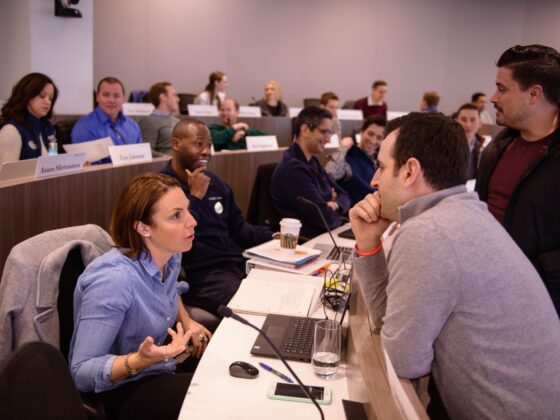Your linkedIn profile is prime real estate.

Executive Career Coach Gregory French shared some best practices on how to maximize your LinkedIn profile and effectively use it in your job search. All MBA students have access to the Career Center resources throughout their time at Darden, and the Career Coaches are here to help you achieve your goals.
Your LinkedIn is a digital first impression
While it includes your resume information, LinkedIn allows you to expand your digital footprint. Take time to emphasize what makes you stand out among the over 1 billion active users on the platform.
Maximize your profile
Focus on your headline and use key words. This is what shows up in search results. Don’t just default to your current job title and company name, but use the headline to re-brand yourself to showcase skills and experience.
What elements make a strong headline?
- ‘I help’ Pitch
- Job Title
- Hard & Soft Skills
- Measurable Metrics
- Headline Length
Boosting the About section
This section can be a bit abstract. Use the about to tell your story and show your personality. Capture career highlights, values, accomplishments, your philosophy, career goals and more.
First paragraph: who are you and how would your colleagues describe you.
Second paragraph: identify your value proposition.
Final line: share what you are looking for (now or in your next position).
Plus, the more active you are with posts/shares/commenting, the higher you will be in search results. Be authentic in what you share to avoid being a ‘cringe LinkedIn influencer.’
3 Tips on Maximizing Results
- Use relevant keywords to show up in recruiters searches. When job searching, use target jobs to focus the keywords you use in your profile.
- Formatting & Grammar. Make content in your About section stand out with bold, italics, line breaks, etc. This section is completely controlled by you, make it easy to follow.
- Feel free to add a personal touch. Include hobbies, travel, food, learning, etc. Don’t make this your opening line, but it can be fun to add farther down and provides talking points for your connections.
Experience
Providing a short description and list of skills with each entry in the experience section can provide context and information. Plus, it’s another place to include keywords.
Networking on LinkedIn
Keep things short, and reach out before you need a job. Utilize the information on your connection’s profiles to send personalized messages. Be direct in your ask and focus on them, not you.
Take advantage of the groups and institutions you are part of and filter on company or industry to find new connections.
Watch the full recording of the session on UVA Darden’s Vimeo channel.





